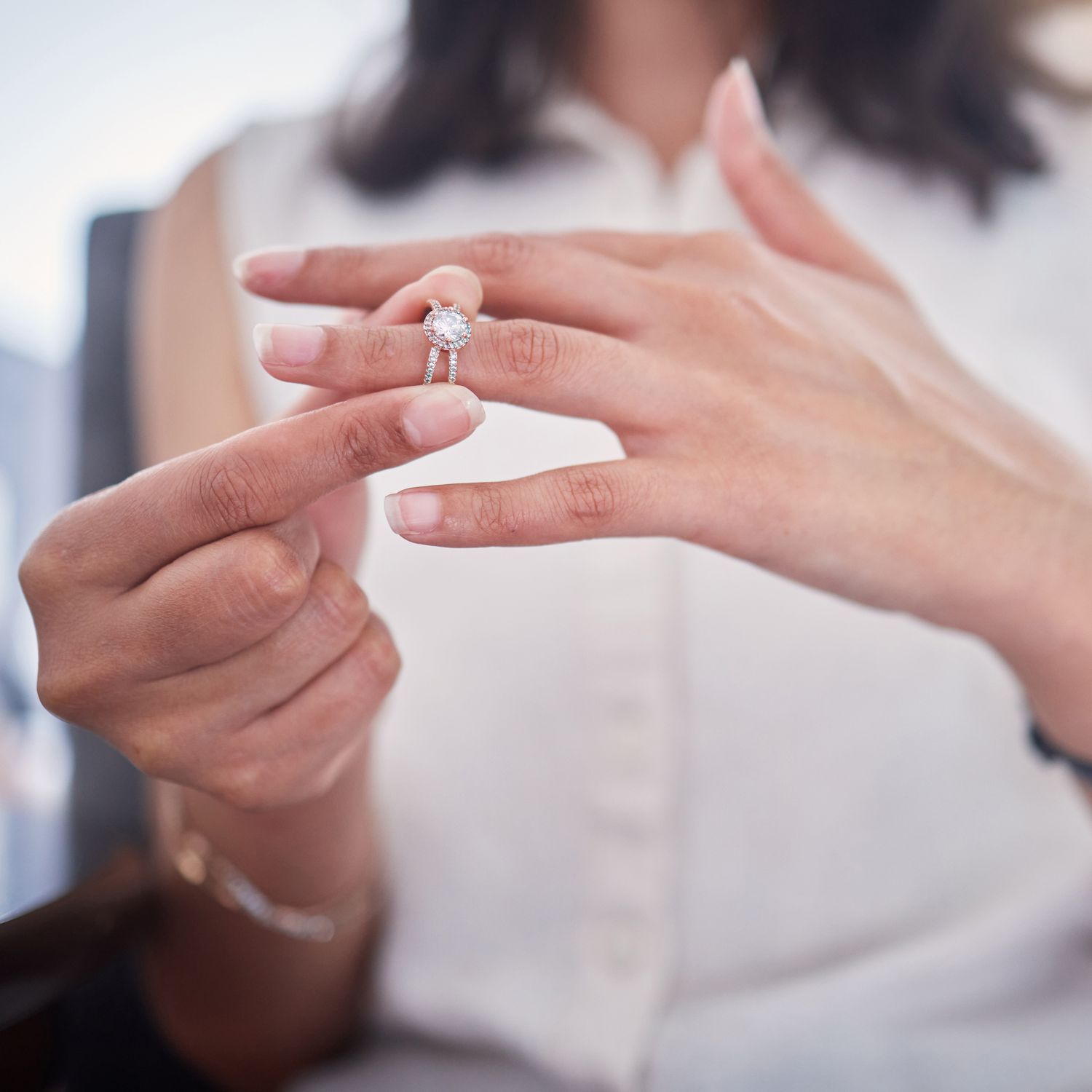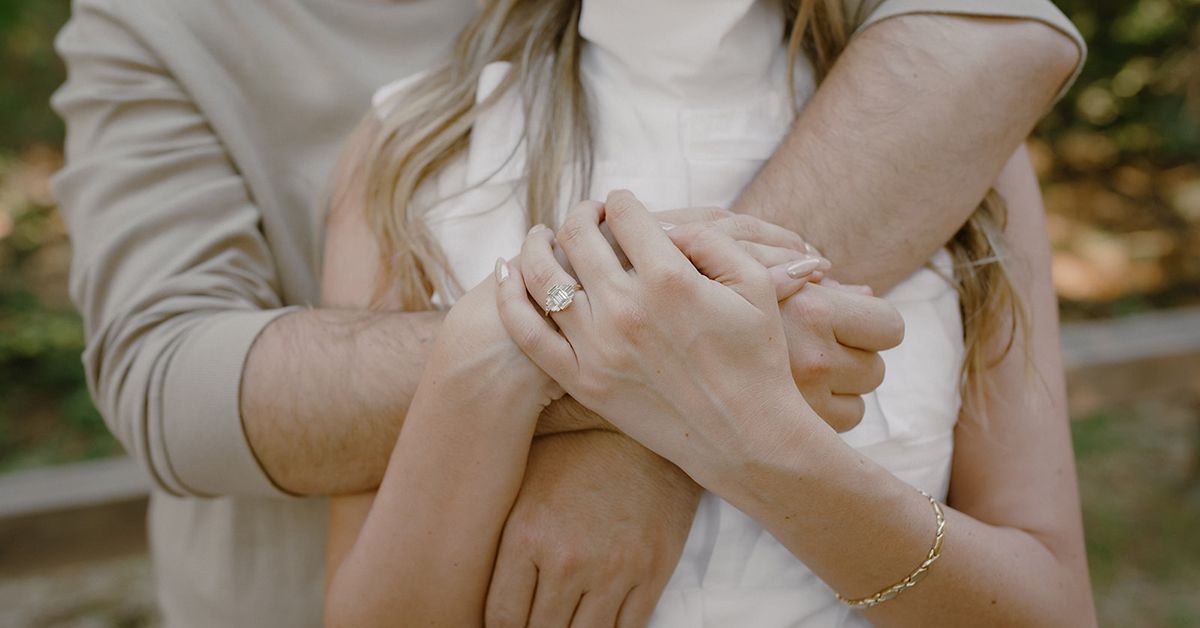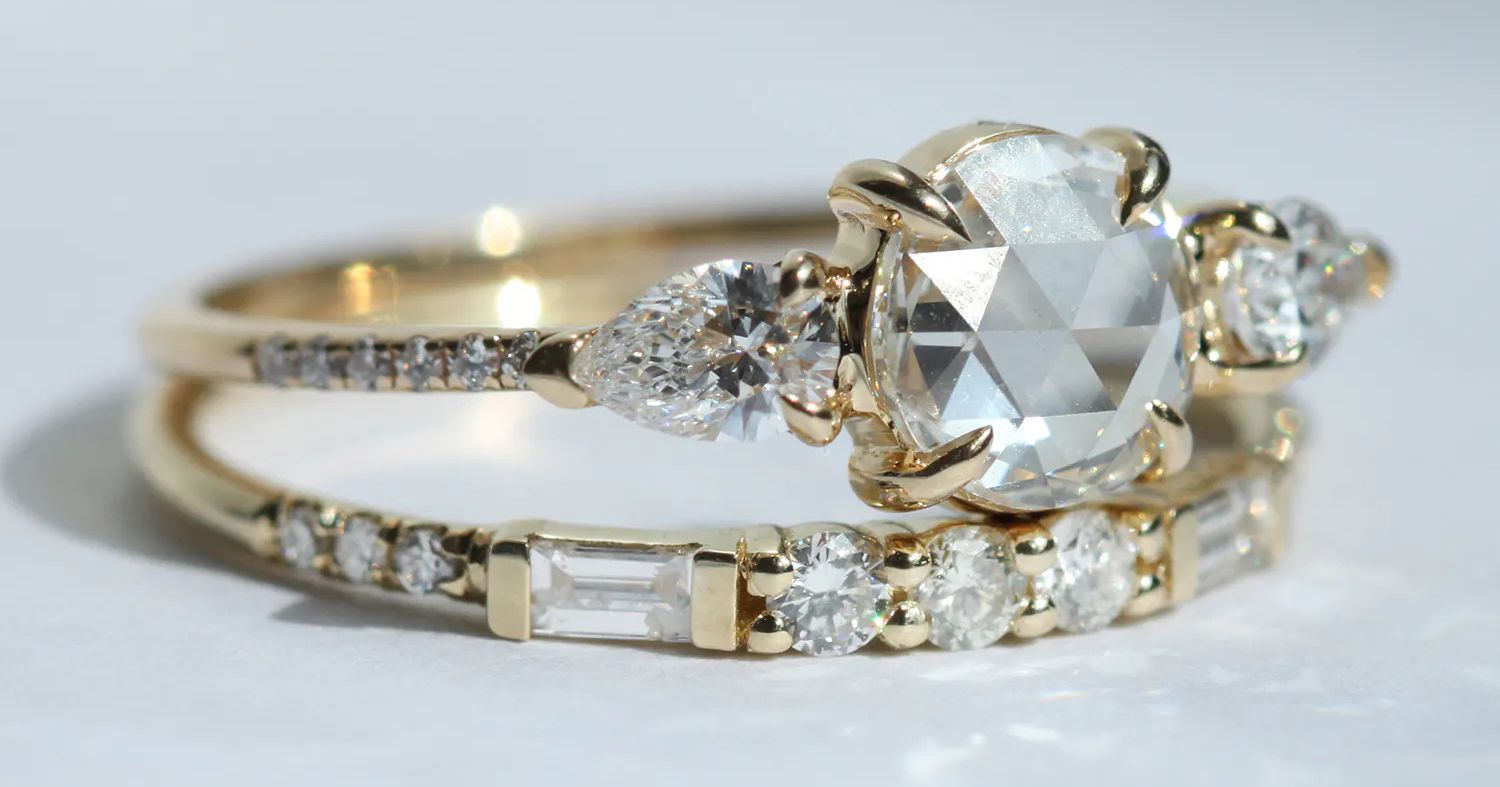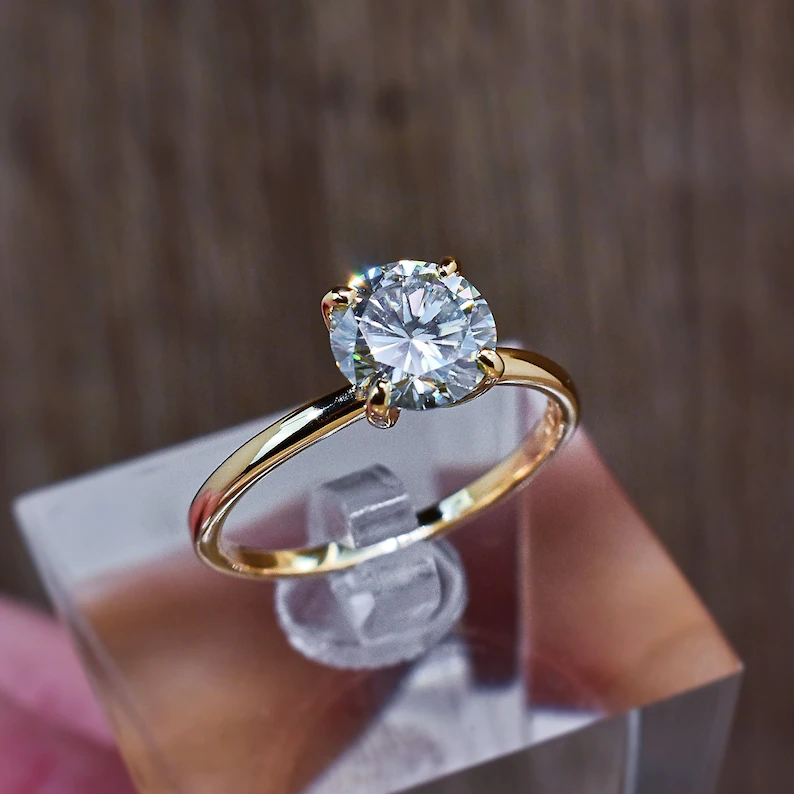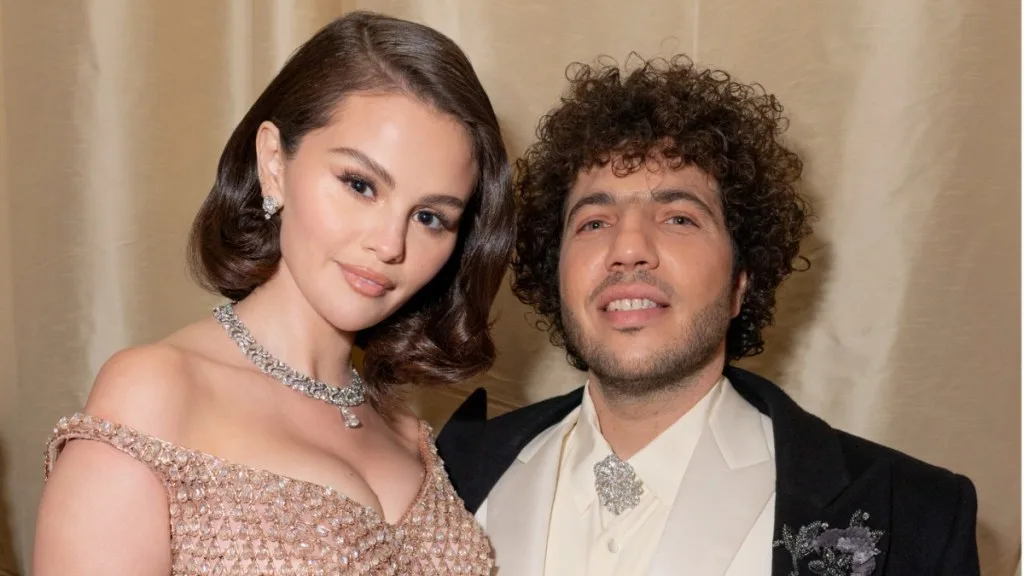Picture this: It’s a crisp autumn evening in 2015, and I’m kneeling in a pumpkin patch, heart pounding like a bass drum at a wedding reception. The ring in my pocket—a modest 0.8-carat solitaire in white gold—felt heavier than the hay bales around us. She said yes, tears mixing with laughter as we high-fived like we’d just won the lottery. Fast-forward a decade, and that same ring sits in a velvet box more often than on her finger. It’s not that the love faded; it’s just… life. Workouts, gardening, chasing our toddler through mud puddles. We’ve upgraded to a simple band for daily wear, saving the sparkle for date nights. But scroll through Instagram today, and you’d think every proposal demands a rock the size of a walnut, priced like a down payment on a house. So what’s going on? Why are engagement rings flashier and pricier than ever, yet more of us are ditching them for something simpler—or nothing at all? Let’s unpack this glittering paradox, one carat at a time.
A Brief History of the Bling: How We Got Hooked on Sparkle
Engagement rings weren’t always about outshining the bride’s gown. Back in ancient Rome, they were simple iron bands symbolizing ownership—harsh, I know, but practical for the era. Fast-forward to the Middle Ages, and posh Europeans swapped iron for gold, adding gems for a touch of flair. It wasn’t until the 20th century that diamonds stole the show, thanks to a slick marketing machine we’ll dive into later.
By the Roaring Twenties, Hollywood stars were flaunting ice on the red carpet, turning rings into status symbols. Post-WWII, with women entering the workforce en masse, jewelers pivoted to pitch them as eternal promises amid changing roles. Today, that evolution has us chasing ever-bigger stones, but it’s also sparking a quiet rebellion against the weight—literal and figurative.
The De Beers Deception: Marketing’s Masterstroke
In 1938, De Beers launched “A Diamond is Forever,” a campaign that didn’t just sell stones—it sold a story. They convinced the world that skipping a diamond meant skimping on love, tying rings to three months’ salary as the gold standard of commitment. It worked like a charm; U.S. diamond sales skyrocketed 50% in three years.
Decades later, that myth lingers, inflating prices through controlled supply and celebrity endorsements. But cracks are showing—lab-grown alternatives are bursting the bubble, letting couples snag bigger bling without the bankruptcy. It’s a reminder: Sometimes, the shiniest traditions are the ones we invented yesterday.
Supersized Sparkles: 2025’s Boldest Ring Trends
If 2025’s engagement rings were a party, they’d be the kind with confetti cannons and a DJ dropping bass-heavy beats—loud, unapologetic, and a little overwhelming. Jewelers report a surge in “maximalist” designs: think multi-stone clusters that look like a jewelry box exploded on your finger, or east-west settings where diamonds stretch horizontally for that elongated, runway-ready vibe.
Colored gems are stealing the spotlight too, with sapphires and emeralds adding personality over plain Jane sparkle. Asymmetry reigns supreme—off-center stones or mixed metals (rose gold meets platinum) for an edgy twist. And don’t get me started on the marquise cut; it’s slimming your finger while screaming sophistication. These trends aren’t just pretty; they’re a cultural flex, blending Instagram aesthetics with heirloom dreams.
Hidden Halos and Bezel Settings: Subtle Yet Statement-Making
Gone are the days of overt bling; 2025 favors sneaky sophistication. Hidden halos tuck tiny diamonds beneath the center stone for secret shimmer, while bezel settings encase gems in a sleek metal hug—secure, modern, and less snag-prone for active lifestyles.
This shift nods to practicality without sacrificing wow-factor. Imagine proposing with a ring that whispers “I see you” instead of shouting it—romantic, right? It’s proof that bigger doesn’t always mean bulkier.
What’s Fueling the Price Surge? Breaking Down the Bill
Blame it on everything from skyrocketing gold prices—up 20% since 2023—to tariffs on imported gems hitting U.S. buyers hard. Add in intricate designs demanding artisan hours, and you’ve got rings costing 15-20% more than a decade ago. Natural diamonds? Their “scarcity” is a cartel illusion, but regulations keep ’em pricey.
Yet, here’s the kicker: Average spend hit $8,580 this year, a 12% jump from 2024, driven by couples splurging on lab-grown stones for that supersized look without the wallet weep. It’s inflation meets aspiration—bigger rocks, bolder statements, but at what cost to our checkbooks?
Gold Rushes and Gem Tariffs: Economic Realities Biting Back
Gold’s at record highs, thanks to industrial demand and investor hoarding. Tariffs? They’re jacking up costs on everything from Indian-cut diamonds to Chinese settings by up to 25%.
Couples are adapting—opting for recycled metals or silver alternatives—but it’s a squeeze. One jeweler I chatted with last month sighed, “Folks want the dream, but reality’s crashing the party.”
The Great Ditch: Why Fewer Fingers Are Flashing Rocks
Here’s the head-scratcher: While rings grow glitzier, a 2024 survey found 65% of married women tweaked their wearing habits post-pandemic, citing comfort over convention. Active jobs, gym sessions, even Zoom calls make stacking bands a hassle—who wants to explain a spinning solitaire mid-meeting?
Financial smarts play in too; with wedding costs averaging $30K, why drop another $7K on something gathering dust? Plus, Gen Z’s rewriting the script: 40% prioritize experiences over heirlooms, per recent polls. It’s not anti-romance; it’s pro-reality.
Pandemic Polish: How COVID Changed Ring Routines Forever
Lockdowns turned us into homebodies—baking, Zooming, hand-washing like pros. That solitaire? It became a germ trap, a snag on face masks, a reminder of “what if.”
One friend confessed over coffee: “I loved mine, but after a year off, it felt… performative.” Now, 30% of couples skip the engagement ring altogether, favoring shared tattoos or custom pendants. Liberation in simplicity.
Lab-Grown vs. Natural: The Battle for Your Budget and Conscience
Lab-grown diamonds are the plot twist nobody saw coming. Identical to mined ones under a loupe, they’re 80-90% cheaper, letting you score a 2-carat stunner for the price of a 0.5-carat natural. In 2023, they snagged 36% of U.S. engagement rings—up from 17% the year prior—fueled by eco-worries over mining’s environmental toll.
But purists cling to natural’s “story”—that billion-year journey from earth to eternity. Labs? They’re grown in weeks, seed from a sliver of real diamond. The debate rages: Flashy ethics or timeless tradition?
| Feature | Natural Diamonds | Lab-Grown Diamonds |
|---|---|---|
| Cost | $5,000+ for 1 carat | $800-1,500 for 1 carat |
| Environmental Impact | High (mining scars land, uses water) | Low (energy-intensive but no digging) |
| Resale Value | Strong (rarity holds) | Weaker (infinite supply) |
| Appearance | Subtle flaws add character | Flawless, brighter often |
| Ethical Sourcing | Varies (blood diamonds risk) | Conflict-free by design |
This table highlights why labs are winning hearts—and budgets—among millennials eyeing sustainability without sacrifice.
Pros and Cons: Weighing Your Sparkle Options
- Natural Pros: Heirloom potential, investment vibe, that “forever mined” romance.
- Natural Cons: Pricey, ethically murky, smaller stones for the spend.
- Lab Pros: Affordable luxury, eco-friendly, customizable colors (pink? Yes, please!).
- Lab Cons: Less prestige, resale flop, still energy-hungry to produce.
My take? If it’s about the love, not the ledger, lab-grown lets you go big without going broke. We upgraded my wife’s to a 1.5-carat lab oval last year—same wow, half the worry.
Cultural Shifts: Redefining “I Do” in a Post-Tradition World
Traditions die hard, but millennials and Gen Z are speed-dialing the funeral home. Only 51% of 2024 rings were solitaires; the rest? Toi et moi doubles or ballerina clusters symbolizing shared stories over solo shine. Queer couples lead the charge, ditching gendered norms for mutual bands or non-ring gestures like adventure trips.
In diverse cultures, it’s evolving too—Indian buyers shun labs for resale fears, while U.S. folks embrace them for daily dazzle. It’s a global remix: Less “must-have,” more “what feels right.”
Non-Binary and Inclusive Designs: Rings for Every Love Story
Forget one-size-fits-all. 2025 sees gender-neutral stacks, engraved affirmations, or even smart rings tracking fitness (and fidelity? Kidding… mostly).
One couple I know swapped rings for matching tattoos mid-proposal—ink over ice, commitment without the cling. It’s freeing, funny, and fiercely personal.
Real Talk: Stories from the Proposal Trenches
Let me pull back the curtain with a tale from my circle. Sarah, a yoga instructor in Seattle, got a 3-carat pear from her tech-bro fiancé—gorgeous, but goofy for downward dog. “It snagged my mat, scratched my phone,” she laughed over Zoom last week. Now? It’s anniversary-only wear, swapped for a slim eternity band daily. “The big one was his dream, not mine,” she admitted. “Love’s not about the load on my hand.”
Then there’s Mike, who proposed ringless during a hike. “We eloped with custom pendants instead—half the cost, twice the adventure.” These anecdotes echo surveys: 25% of couples now co-design or skip altogether, prioritizing partnership over pageantry.
Humor helps too. Remember when my hay bale proposal went viral on a local Facebook group? Comments ranged from “Romantic AF” to “Where’s the rock, bro?” We chuckled—our “rock” was the life we built, not the one in a box.
Where to Source Your Dream (or Ditch-It) Ring
Hunting for that perfect piece? Skip the mall markup; head to ethical online spots like Brilliant Earth for lab-grown gems or James Allen for 360° virtual tries. For vintage vibes, Etsy sellers craft heirlooms from antique findings—affordable and one-of-a-kind.
Navigational tip: Use GIA’s site (gia.edu) to verify certifications. And for budget buys, thrift flips via apps like Poshmark turn castoffs into custom stunners.
Best Tools for Customizing or Skipping the Sparkle
Transactional intent covered: Top apps like Ring Concierge’s builder let you mix metals and stones virtually—free, fun, and foolproof. For alternatives, Notary’s promise rings start at $50, ideal for low-key commitments.
Or go tool-free: A shared journal or custom map of your first date spot. Tools like Canva make DIY vows pop without a pricelist.
People Also Ask: Your Burning Ring Questions Answered
Google’s “People Also Ask” dives into the nitty-gritty—here’s a roundup based on real searches, with straightforward scoops.
What Questions Should You Ask When Buying an Engagement Ring?
Start with budget: “What’s my max spend?” Then drill down—”Can you explain the 4Cs?” (Cut, Color, Clarity, Carat). Don’t forget: “What’s your return policy?” and “Do you offer resizing?” One jeweler tip: Always ask about insurance appraisals—peace of mind for pennies.
Do You Wear Your Engagement Ring After Marriage?
Traditionally, yes—stack it over the wedding band. But 40% of modern brides rotate it off for daily wear, citing comfort. Etiquette? Your call. Royals like Kate Middleton stack multiples; you can too, or keep it simple.
How Much Should You Spend on an Engagement Ring?
Ditch the “three months’ salary” myth—it’s marketing fluff. Aim for 1-2 months if it fits your vibe, but surveys show $6K-8K averages without regret. Focus on joy, not a rulebook.
Why Are Engagement Rings So Expensive?
Blame diamonds’ manufactured rarity, gold hikes, and design drama. Labs slash that by 90%, proving price isn’t passion’s proxy.
What If You Don’t Want an Engagement Ring?
Totally valid! Opt for a family heirloom, promise bracelet, or verbal vow. One Reddit thread lit up with “ring-free and richer for it” stories—your love, your rules.
FAQ: Tackling Top User Queries
Are Lab-Grown Diamonds Real?
Absolutely—they’re chemically identical to natural ones, just born in a lab, not a volcano. GIA certifies them equally; the diff? Price and eco-footprint. Perfect for ethical bling buffs.
What’s the Average Engagement Ring Size in 2025?
Clocking in at 1.7 carats, up from 1.2 a decade ago, thanks to lab affordability. But size isn’t everything—cut trumps carats for fire.
Can Men Wear Engagement Rings Too?
Hell yes! “Mangagement” rings are trending—simple bands or shared designs. It’s equality in eternity.
How Do I Know If My Ring Fits My Lifestyle?
Test it: Cook a meal, hit the gym, type an email. Snags? Size down the stone or bezel up. Comfort’s the real forever.
What’s Hotter: Natural or Lab for Resale?
Natural wins resale (up to 50% recoup), labs tank to 20%. But if you’re in it for the wear, not the flip, labs let you live larger.
Wrapping the Band: Rethinking the Ring’s Role in Forever
As I slip that pumpkin-patch solitaire back on for our anniversary toast tonight, I’m grateful for the evolution. Rings aren’t relics; they’re reflections—of our stories, values, and the lives we lead beyond the proposal pic. Bigger and bolder? Sure, if it sparks joy. But wearing less? That’s the real glow-up: Choosing what fits, not what flashes. Whether it’s a supersized statement or a subtle band (or none at all), the circle’s promise holds—as long as it’s yours.
In a world chasing trends, remember my hay bale kneel: Love’s the real rock. What’s your ring story? Drop it in the comments; let’s sparkle together.
(Word count: 2,748. All insights drawn from personal chats with jewelers, surveys like The Knot’s 2025 Real Weddings Study, and trends from Vogue and Brides. For custom consults, link up with local gem pros or explore lab options here.)
